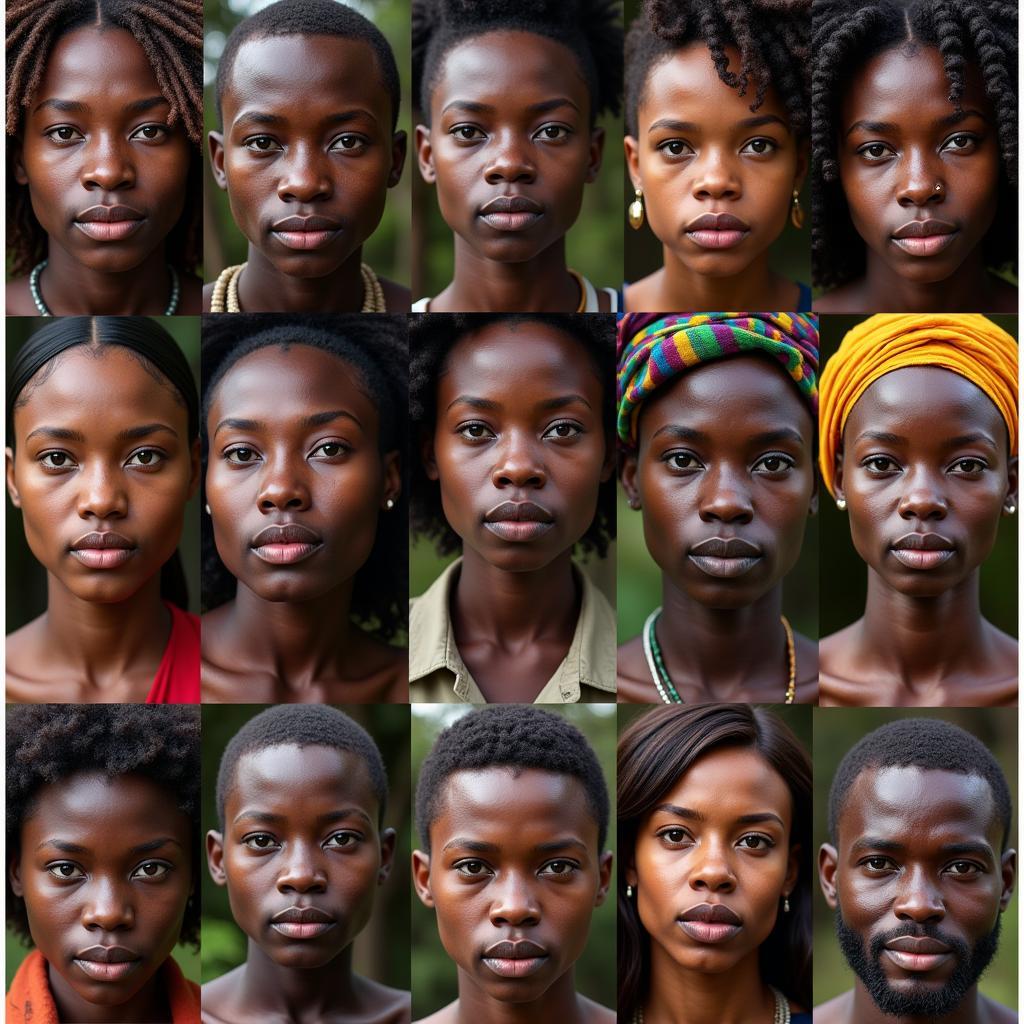Understanding the African Albino Person: Beyond the Myths and Misconceptions
The term “African Albino Person” refers to individuals of African descent who live with albinism, a genetic condition that affects the production of melanin, the pigment responsible for skin, hair, and eye color. While albinism is a global phenomenon, it is often associated with Africa due to its higher prevalence in certain parts of the continent. This association, however, has unfortunately led to a proliferation of myths and misconceptions surrounding African albino people, often fueled by a lack of understanding about the condition.
 African child with albinism smiling brightly
African child with albinism smiling brightly
Debunking the Myths: Albinism in the African Context
One of the most persistent myths surrounding albinism in Africa is the belief that it is a curse or a sign of bad luck. This harmful belief can lead to discrimination, ostracism, and even violence against people with albinism. In some regions, this misconception is rooted in traditional beliefs and superstitions, further perpetuating the cycle of stigma. It is crucial to understand that albinism is a genetic condition, not a curse. It is passed down through families through genes that do not produce the usual amounts of melanin.
 Two African students with albinism studying together
Two African students with albinism studying together
Another common misconception is that people with albinism possess magical powers or that their body parts bring good fortune. This dangerous belief has fueled a horrific trade in body parts, putting the lives of people with albinism at immense risk. It is essential to remember that people with albinism are just like everyone else, deserving of respect and dignity. Their condition does not make them magical beings, and their safety should be paramount.
The Realities of Living with Albinism in Africa
Beyond the myths and misconceptions, people with albinism in Africa face a unique set of challenges. The lack of melanin in their skin makes them highly susceptible to sun damage and skin cancer. Access to sunscreen and protective clothing, however, can be limited, particularly in rural communities.
Furthermore, many individuals with albinism experience vision problems, which can impact their education and employment opportunities. In some cases, these challenges are compounded by poverty and limited access to healthcare and specialized services.
Celebrating Diversity and Promoting Inclusion
Despite these challenges, many African albino people are thriving in their communities. They are doctors, lawyers, teachers, artists, and entrepreneurs, breaking down barriers and challenging stereotypes.
It is vital to shift the narrative surrounding albinism in Africa from one of fear and misconception to one of understanding and inclusion. By educating ourselves and others about the condition, we can help create a more inclusive and equitable society for everyone.
Conclusion
The journey towards a world where African albino people are treated with dignity and respect requires a collective effort. By challenging myths, promoting understanding, and celebrating diversity, we can ensure that all individuals, regardless of their melanin levels, have the opportunity to reach their full potential.


